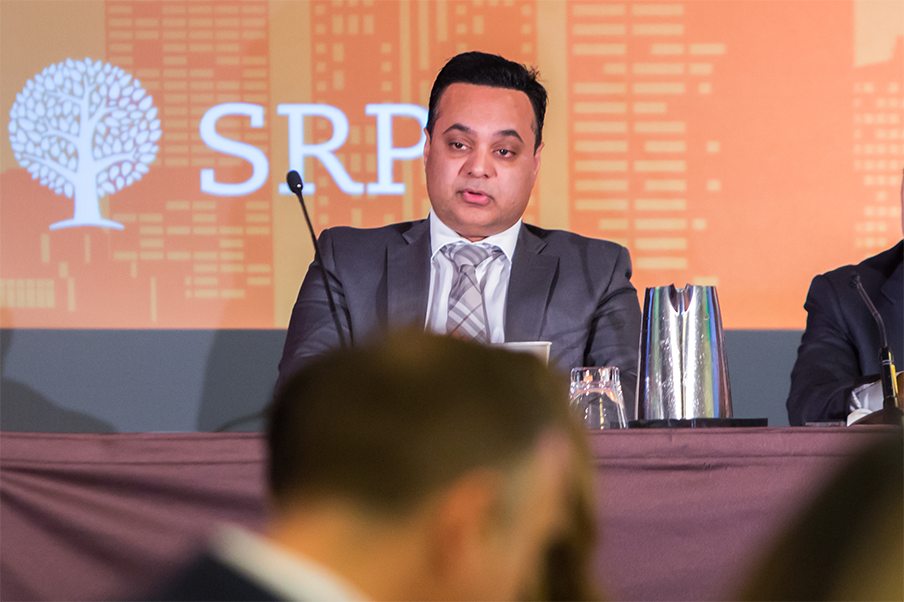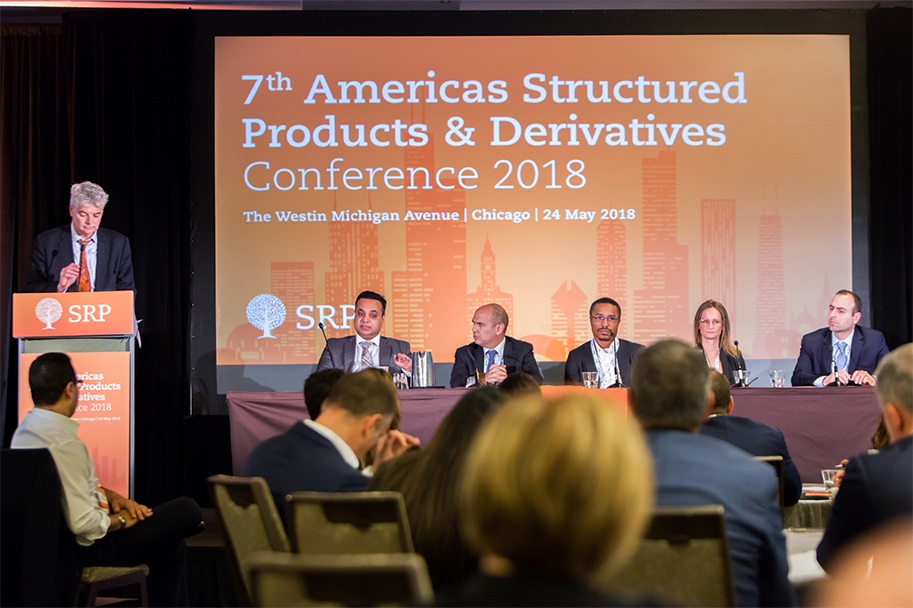For the US structured products market to double in size the main issuers would have to issue more products but whether that is feasible would really depend on the individual banks, according to panellists during the leading manufacturers' forum at the 7th SRP Americas Conference on May 24 in Chicago.
Over the last 12 months JP Morgan has issued around US$14bn in debt and doubling that in size "would be close to US$30bn", according to Larry Wilson (pictured), managing director, head of Americas retail distribution, structured investments, JP Morgan,. "That's a big number for JP Morgan relative to where I think my treasury partners would want to be with structured products on the balance sheet."
According to Jason Broder, managing director, head of third party distribution and Simon platform Goldman Sachs, structured debt is always going to be a small piece of the overall balance sheet. "But if we have the opportunity to add an incremental US$10bn of debt in structured debt versus US$10bn in selling 10-year paper to Pimco or BlackRock, or something like that, I think that we would be comfortable as an institution in doing more structured debt," said Broder.
It depends on what type of debt you are talking about, said Wilson. "If you are talking about step-up callables, then yes, that looks similar to the type of profile that our treasurers are trying to raise," said Wilson. "However, if you are talking about autocallables, which, if you believe the statistics, is 40% plus of the market, not only do I have a treasury constrain, I also have a trading risk level constrain, so it really depends on the type of products our distribution partners decide to sell."
At some banks, the treasury is flushed with cash already, according to Abid Chaudry (below), managing director, head of global structured products, BMO Capital Markets. "Bank of Montreal is a place where we are always looking at deposits," said Chaudry. "We have lots of long growth and we use internal deposits fully and we are trying to get funding in the wholesale market all the time. Our treasury would be happy if we doubled or tripled our profile."

To make the structured products market bigger, one concept the industry has talked about a lot is the concept standardising nomenclature, according to Brooke Hammel, co-head of retail structured products, Americas, Morgan Stanley. "We need to challenge the major issuers on actually implementing this," said Hammel. "We cannot expect that an adviser who is operating independently, assuming they are familiar with structured investments, that a buffered plus, which is what we call it at Morgan Stanley, is the same as a supertracker, which is how it is called at Barclays," said Hammel noting that although there has been progress, "so far we haven't really made a game plan".
According to Wilson, financial advisers are not necessarily looking to be educated, instead they are looking for awareness of were their product set is to meet the particular goals that they are trying to accomplish.
"We have a pretty robust platform but we only touch 10,000 advisers," said Wilson. "How do we grow? We try to get penetration rates, we try to get awareness. We really want advisers to be aware, based on their goals, this is another product they can think about, in the litany of products that they have to execute to reach their goals. And then we go from there," said Wilson.

Broder added that everything would fall into place "if we can make it easy for advisers to really understand were these products fit into their overall portfolio and how they can help their clients".
In Mexico, manufacturers are working much more with technology, according to Manuel Meza, managing director, global structured solutions, BBVA Bancomer. "In the retail space we have to give the clients and distributors the opportunity to understand the products they have and how they work within their strategy," said Meza. "I think there are still a lot of people in Mexico who would prefer to leave the management of their wealth to a portfolio manager."
When Chaudry started at Bank of Montreal, the bank had around US$10bn worth of GICs (guaranteed investment certificates) on their books in Canada. "We took that to over US$60bn," said Chaudry, pointing at education as the reason behind the increase. "Technology is going to evolve and we are going to make things better [...] allowing us to do things that we could never do, back testing, new websites, PDFs instead of paper handouts," said Chaudry. "As long as we focus on educating the client on the type of products and keeping the products simple."
"The error that we made before was a novice error," said Chaudry. "We are all smart people, graduated from university, we wanted to show how smart we were and we came up with all these great structures. We wanted to be funky, we wanted to show how innovative we were, but the problem was the end client didn't understand," said Chaudry. "Now we have simple products for clients that can really understand them. We want to keep it like that. We want to make mainstay products. Just like there are balanced mutual funds and aggressive mutual funds, we want to make mainstay autocallables, mainstay PPNs (principle protected notes)."
According to Meza, in Mexico the market has been working with sales practice, a directive similar to Mifid 2 in Europe. "We know how to sell structured products to the client and now we have to start working on the after sales service," said Meza. "People are always asking what is going on with their notes once they have them in their portfolio, when is the coupon being paid, how is the valuation, etcetera. That is a lot of work. At BBVA we have 400 to 500 notes live every month," Meza concluded.
Related stories:
High returns have driven volumes up, SRP Americas
Feeling good doesn't make money, SRP Americas
Putting structured products in a model isn't always the answer, SRP Americas